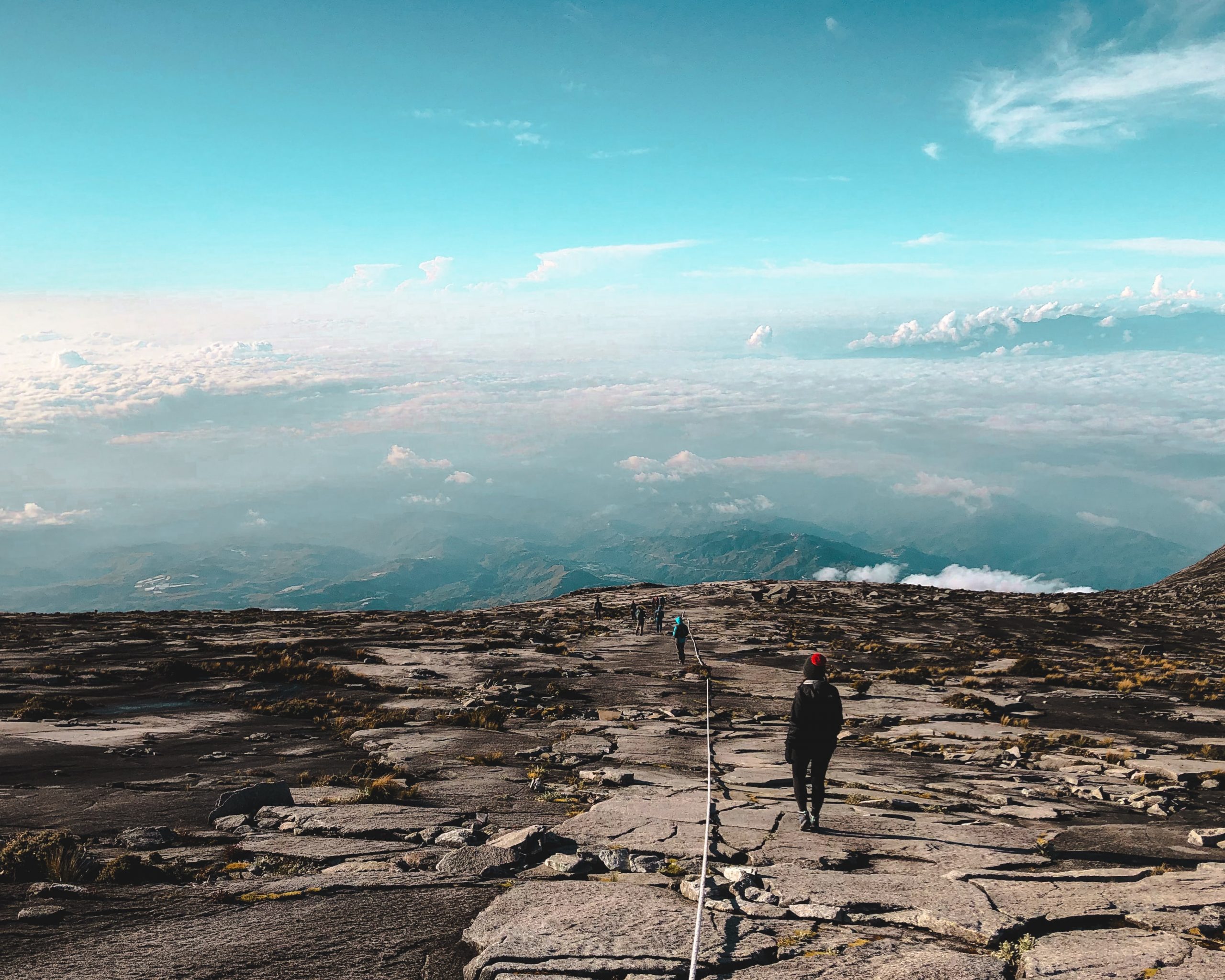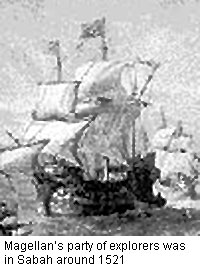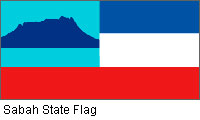
A Short Historical Overview
Published on Nil | by flyingdusun.com
|
Prehistory and Early History Not much is known of Sabah’s early prehistory. Archeological finds are rare but it must be presumed that as early as 40,000 years ago modern man has already roamed the jungles of North Borneo. By the 9th century AD., Sabah, then under various chieftains, traded with China and later the Spanish and Portuguese. During the 15th century, Sabah was a vassal of the Sultan of Brunei. In 1521 Ferdinand Magellan’s ships sailed into Brunei Bay and later repaired their vessels in Banggi and Balambangan, islands in the very north of Sabah. In 1704, the Sultan of Brunei ceded the lands east of Marudu Bay to the Sultan of Sulu, while the west coast remained under his rule. The Sultans of Brunei and Sulu exercised a nominal control over north Borneo, especially the coasts, while headhunters roamed the forests and pirates infested the seas. The headhunters were Kadazandusun, as well as Murut tribesmen, and of the two the Kadazandusun were the first to give up headhunting. The pirates were Illanun, Iranum, Balanini, Obian, Bajau and Suluk living in the Southern Philippines and on islands off the coast of North Borneo. Their vessels were of large size, mostly out-triggered, measuring approximately ninety feet long and heavily armed. In Sabah, their strongest lairs were in Marudu Bay and the Tunku Island near present day Kota Kinabalu. In 1685 the first Englishman visited Sabah. It was Captain Cowley, and he visited the islands on the northern end of Borneo (Banggi, Balambangan). In the 1760’s Alexander Dalrymple and James Rennell came to Borneo and mentioned Sabah. In 1773 the East India Company founded a trading post on Balambangan Island, but two years later the settlement was attacked and destroyed by pirates. It was not until Raja Brooke of Sarawak, with his personal contacts to the Sultan of Brunei, persuaded the Government to suppress piracy and in 1846 the Sultan of Brunei ceded Labuan Island off Sabah’s south-west coast to serve as a base for the anti-piracy operations of the British. The last pirate stronghold in Sabah, at Tunku Islands, was destroyed in 1879. |
  |
|
|
|
|
The North Borneo Chartered Company In 1865 Claude Lee Moses, an American trader and then the United States Consul in Brunei, obtained a lease over Sabah from the Sultan of Brunei. In 1881 the lease eventually passed to Alfred Dent, head of an important firm in Hong Kong and was converted into a cession. His associates included Baron de Ovenbeck, the Austrian Consul General in Hong Kong; Sir Rutherford Acock, who became the chairman of their provisional association to make terms with the British Government; and Mr Richard Martin, a member of the well-know banking house of that name. The Sultan of Brunei appointed Sir Alfred Dent to be supreme ruler, with the titles of Maharaja of Sabah and Rajah of Gaya and Sandakan. The Sultan of Sulu added the titles of Datu Bandahara and Rajah of Sandakan, both granting absolute power of life and death over the inhabitants of North Borneo. When Mr Gladstone, Prime Minister of the Liberal Government advised Queen Victoria to grant a Charter to the British North Borneo Company, the company acquired the sovereign rights of Sir Alfred. The Governors of the British North Borneo Company were appointed with the approval of the Crown and several civil servant of the colonial office served in North Borneo as Governors before moving to higher posts. The list of Governors includes distinguished administrators such as Sir Hugh Clifford, Sir Ernest Birch and Lord Milverton in their younger days. The Chartered Company was of purely British character. It could not transfer its territories without consent; it could trade but not grant a general monopoly. It undertook to abolish slavery, administered law and justice with regard to the Native Laws and Customs and did not interfere with the religion of the people. William C Cowie stands out amongst the many associates of the Chartered Company. He was a young Scotsman, a ship engineer by profession who aspired to acquire lands in North Borneo very much like Rajah Brook had done in Sarawak. He came from his native land with a few friends on a steam launch and made friends with the Sultans. This enabled him to establish trading posts at Labuan and Sandakan. He subsequently supplied the Suluk with arms and ammunition in their fight against the Spaniards, who then ruled over the Philippines. Many years later, when the Chartered Company was securely established, he joined the company and rose to be its chairman. His resource and enterprise did much to advance the interests of the company and his personal relationship with the Sultans proved of great value. |
  |
|
|
|
|
Jesselton (see also Kota Kinabalu) The North Borneo Chartered Company has been remarkably free from unrest. Trouble arose when younger relatives of the Sultans protested against the loss of their birthright. The most important of these was Mat Salleh, of the family of the Sultan of Sulu by marriage into it. Mat Salleh’s origins itself are confused, some say he was a Suluk from the Philippines, others an Orang Sungai of Sabah (from the Kinabatangan area) or even a Suluk-Bajau from Inanam. For sure is that Mat Salleh was a courageous, however often ruthless rebel who revolted against the British. Those were fast acquiring land and imposing taxes on the native people – amongst others there was a tax on tapai, the locally brewed rice and cassava wine or beer. Mat Salleh was again and again able to motivate and recruit large gangs from the ranks of the Kadazan and Dusun, even though they were from different ethnic back-grounds. He promised to liberate them from the British, in which he ultimately failed and many natives lost their lives in the battles against the well-equipped purchasers of their land. One of Mat Salleh’s best remembered deeds was the attack and the subsequent complete destruction of the English trading post on Gaya Island in 1898. The island is now part of the Tunku Abdul Rahman Marine National Park, just off Kota Kinabalu. He and his gang looted the place and burnt it down, completely destroying it. It is said that people from across the mainland in Sembulan, Tanjung Aru and as far as Putatan could see great flames over Pulau Gaya. Everybody shouted “api, api (fire, fire)”! Subsequently, the new settlement the English built on the land opposite Gaya Island became to be known, informally, as Api-Api: after the incident, in 1899, the English decided to move to the mainland, and installed themselves between Tanjung Aru, Sembulan and the area just opposite Pulau Gaya. Sir Henry Walker, commissioner of land, established the township which was named in memory of Sir Charles Jessel, one of the directors of the Chartered Company managing the area: ‘Jesselton’. However, the name Jesselton was difficult for locals to pronounce, and Api-Api remained the preferred name for the new town (now still to be found in ‘Api-Api Centre’ etc, and in the Chinese translation of Kota Kinabalu: ‘Yapi-Api – 亞庇). Mat Salleh’s hideout was in the area of Kampung Mengkabong, not far away from Tuaran, or some 25 km from the present day State Capital of Sabah, Kota Kinabalu. Mat Salleh met his death in Tambunan, where he was besieged in his fort until he had to give up. After his death, which was witnessed by one of the English, the fort was razed to the ground and only a mound betrays to-day it position. Legends still abound around Mat Salleh, who in the eyes of the locals was not entirely a hero then. Many had to die for his ideas and private wars, which had not improved the native’s position. He remains as historical as mystical, and some claim he was actually not shot, but made it away safely to his home in the Kinabatangan area. He holds now the title of ‘Sabah’s first freedom fighter’. |
  |
|
|
|
|
British Colonial Ere |
 |
|
|
|
|
Independence The inhabitants of Sabah have based their societies on kinship and by tribal affiliations. Under the British Chartered Company headhunting was outlawed, and the native codes of law (adat) were ‘modernised’. Life went at a generally placid pace and it was not until the 1960s that a political conciousness emerged. The winds of change – the tide of independence being experienced by other countries had arrived in Sabah. It began with an announcement in 1961 by the Prime Minister of Malaya, Tunku Abdul Rahman, regarding the formation of the Federation of Malaysia which was to include Malaya, Sabah, Sarawak, Brunei and Singapore. Malaysia was formally established, without Brunei, on 16 September 1963 and North Borneo’s name was changed to Sabah. Preceding this, North Borneo obtained self-government from the British on 31 August 1963. As a state within the Federation many changes occurred, administratively, politically and socially. The pace of development was hastened and Sabah entered a new and challenging era when she became part of the Federation of Malaysia. Though some initial struggles and conflicts with its neighbours, Indonesia and the Philippines, and interesting internal government politics Sabah remained a peaceful nation where the many different ethnic groups from various belief systems live in harmony together. |
  |








